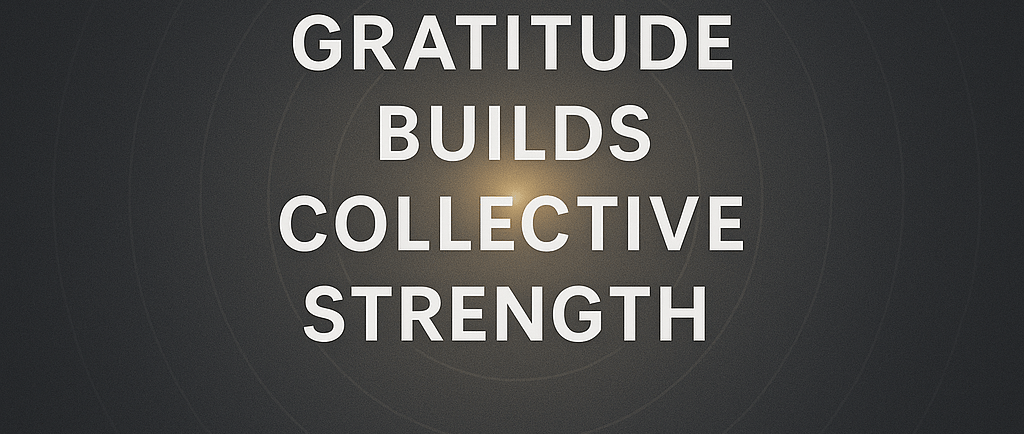Gratitude Is Contagious - And It Strengthens the Whole Team
When most people talk about gratitude at work, they picture a quick “thanks” or an occasional appreciation email. It’s polite, sure — but research suggests gratitude is much more than manners. It’s a collective amplifier.
Brian McNamara
11/7/20252 min read


When most people talk about gratitude at work, they picture a quick “thanks” or an occasional appreciation email. It’s polite, sure - but research suggests gratitude is much more than manners. It’s a collective amplifier.
A 2023 study found that work gratitude shows moderate relationships with collective psychological capital (ρ = 0.482), collective self-efficacy (ρ = 0.442), and collective hope (ρ = 0.431), all with p < 0.001 — meaning these results are statistically rock solid.
In plain language: as gratitude rises in a workplace, so does the group’s shared optimism, resilience, and belief in its own capability.
That’s not just a morale boost - it’s a measurable competitive advantage.
What the Numbers Actually Mean
Those values might look technical, but they translate beautifully into the human experience.
A correlation of about 0.45 represents a moderate, meaningful relationship, roughly 20% of the variance in a team’s collective psychological strength can be traced back to gratitude.
Let that sink in: nearly one-fifth of what makes a team resilient, hopeful, and confident may come from how often they express appreciation; not just for what’s done, but for how it’s done.
The Human Translation
Think about your own team, maybe an IT group managing constant change, a construction crew navigating tight deadlines, or a leadership circle trying to balance growth with burnout.
When people practice gratitude openly:
They notice others’ contributions faster.
They recover from setbacks together.
They carry a shared belief that “we’ve got this.”
Without it, the same group can start to fragment. Challenges turn into blame cycles. Optimism fades. People disengage.
Gratitude isn’t fluffy, it’s fuel.
Why This Matters for Leaders
From a Grey Scale Mindset perspective, gratitude sits in that perfect in-between space — it’s emotional, yet strategic. It’s not just about being kind; it’s about building cognitive resilience within systems of people.
In teams that express gratitude:
Psychological safety increases.
Collaboration improves because egos soften.
Innovation rises because curiosity replaces defensiveness.
It’s a cascading effect, one “thank you” shifts tone, tone shifts culture, and culture shifts outcomes.
How to Build It Intentionally
Make gratitude routine.
Begin meetings with a brief “gratitude ripple” invite one person to share something they appreciated that week. Rotate weekly.Model vulnerability.
Gratitude feels more authentic when leaders share it sincerely, especially during mistakes or uncertainty. (“I’m grateful we caught that before it grew.”)Connect it to meaning.
Don’t stop at “thanks for your help.” Try, “Thanks for catching that, your attention to detail kept our client’s system secure.” Gratitude tied to purpose becomes sticky.
The Takeaway
Quantifiably, gratitude explains about one-fifth of a team’s shared psychological strength. Qualitatively, it changes everything.
It turns compliance into care.
Workload into partnership.
And ordinary teams into high-trust systems that believe in their own potential.
References
Liu, Q., et al. “The Role of Work Gratitude in Team Psychological Capital.” Journal of Positive Psychology, vol. 18, no. 2, 2023, pp. 145–160.
Fredrickson, B. L. Positivity: Groundbreaking Research Reveals How to Embrace the Hidden Strength of Positive Emotions, Overcome Negativity, and Thrive. Crown, 2009.
Luthans, F., & Youssef-Morgan, C. M. “Psychological Capital: An Evidence-Based Positive Approach.” Annual Review of Organizational Psychology and Organizational Behavior, vol. 4, 2017, pp. 339–366.
